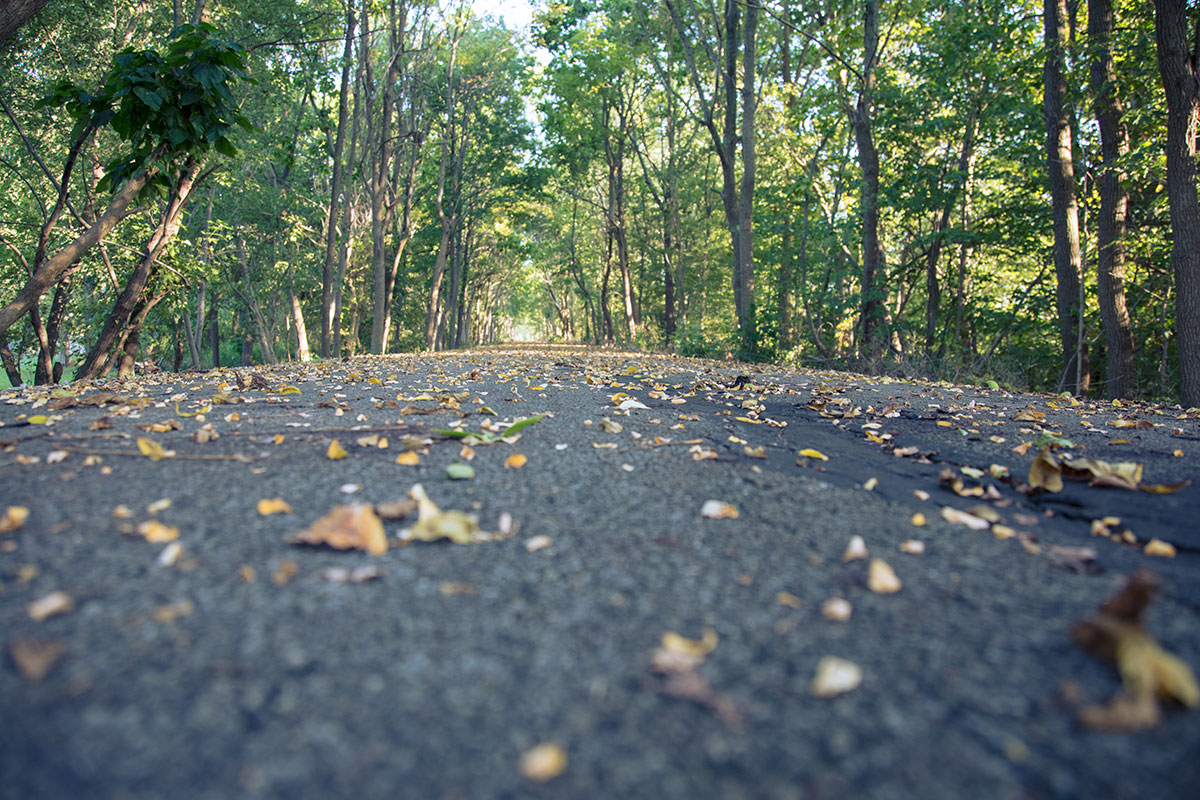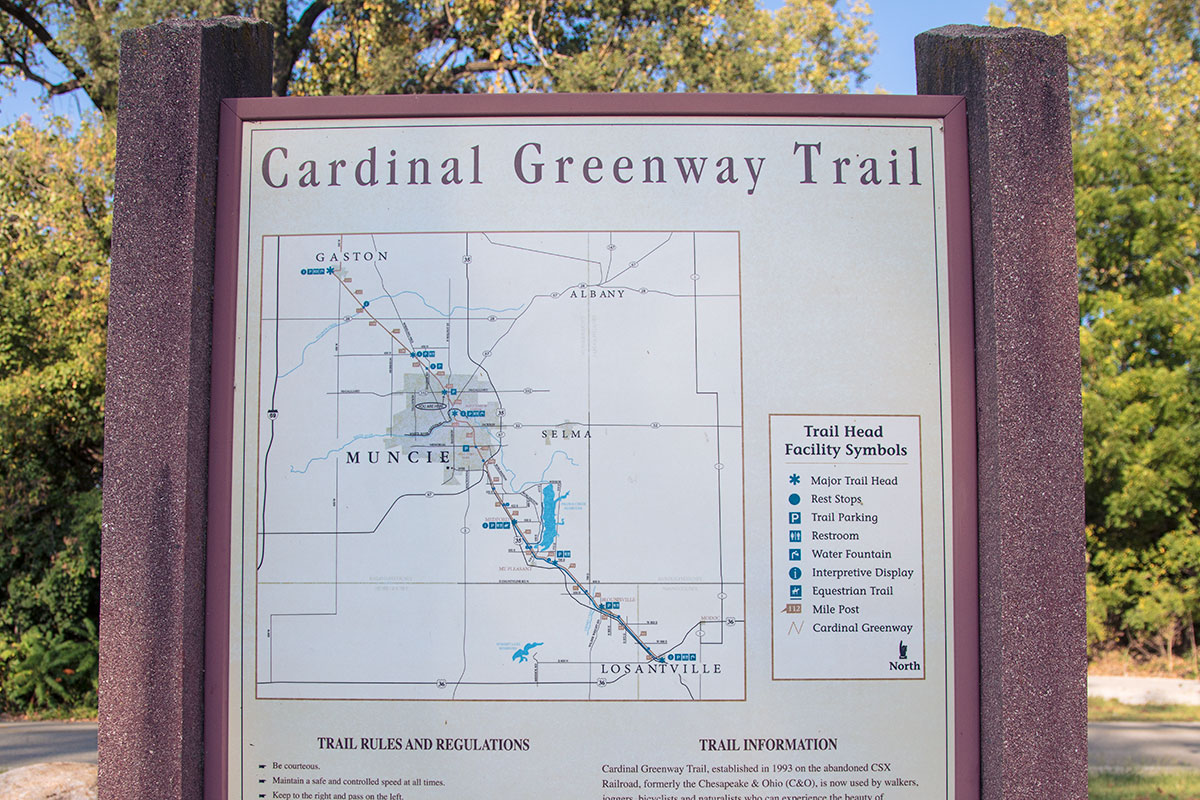The Cardinal Greenway is beautiful any time of year, but especially so in fall. Indiana once boasted thousands of miles of railroads. Beginning with the Indianapolis and Madison Railroad in the 1840s, companies both large and small laid track all across the Hoosier state, connecting Indiana cities to rural hamlets and regional metropolises alike. The railroads ruled transportation in the Hoosier state after the Civil War, pretty much all the way through the Second World War.
 Cardinal Greenway (left) and abandoned rail bridge (right).
Cardinal Greenway (left) and abandoned rail bridge (right).
However, with the arrival of personal automobiles and shipping trucks, both passenger and freight rail declined. Many railroads were simply abandoned in mergers and bankruptcy. In a relatively short period of time, the deserted rails buckled in the freeze and thaw cycle of our harsh winters, and nature began to reclaim whole sections of track.
In the early 1990s, the nonprofit Cardinal Greenway, Inc. was formed with a primary objective to bring a "rails-to-trails" project to central Indiana. Cardinal Greenway, Inc. purchased 60 miles of abandoned CSX track for just such a purpose. The unused line stretched from Marion to Richmond, traversing Grant, Delaware, Henry, Randolph, and Wayne counties.
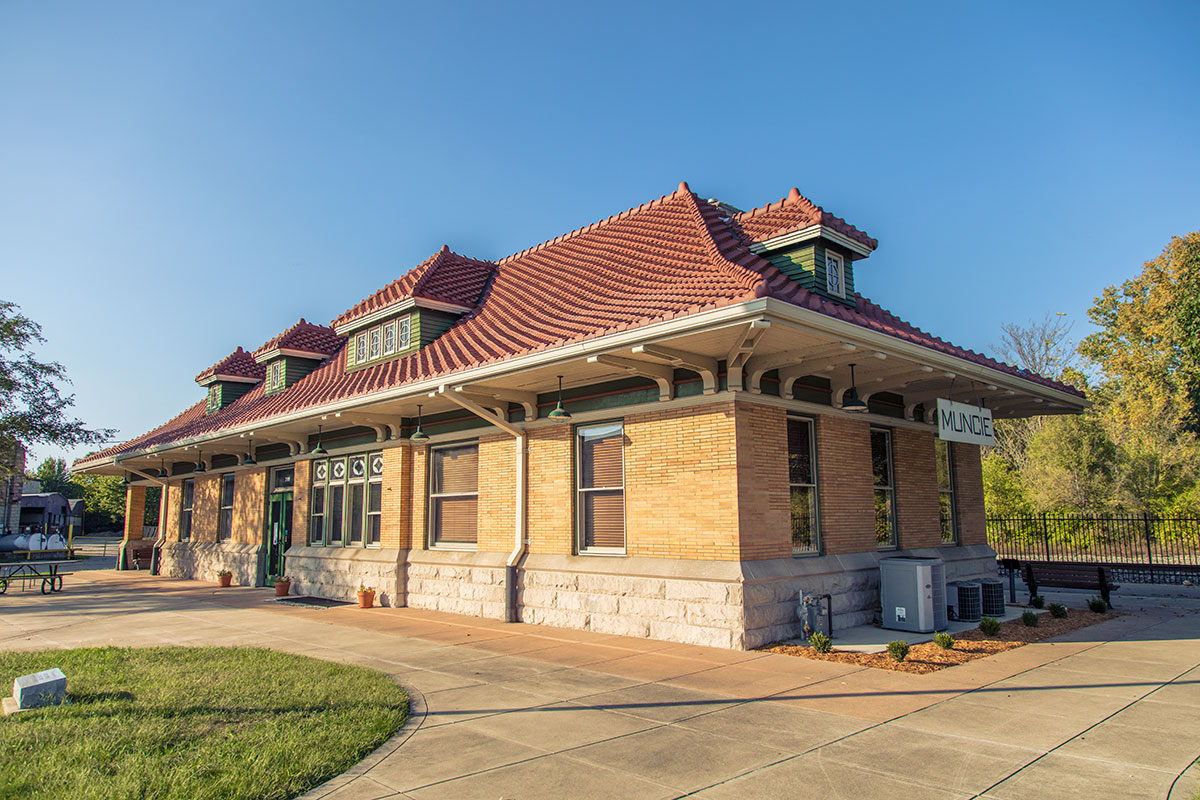 Restored Wysor Street Depot and (now) Cardinal Greenways, Inc. headquarters.
Restored Wysor Street Depot and (now) Cardinal Greenways, Inc. headquarters.
The track was old, having originally been laid by the Cincinnati, Richmond, and Muncie railroad company in 1901. C.R.&M. also built the (now preserved) Wysor Street Depot in Muncie. Nine years later, the Indiana division of the Chesapeake and Ohio Railway Company purchased the line and shuttled passengers along the route until 1949. The line was eventually sold to CSX for freight shipping. Briefly in the 1970s and early 1980s, Amtrak ran the "Cardinal" train along the route. But by 1986, the line was completely abandoned.
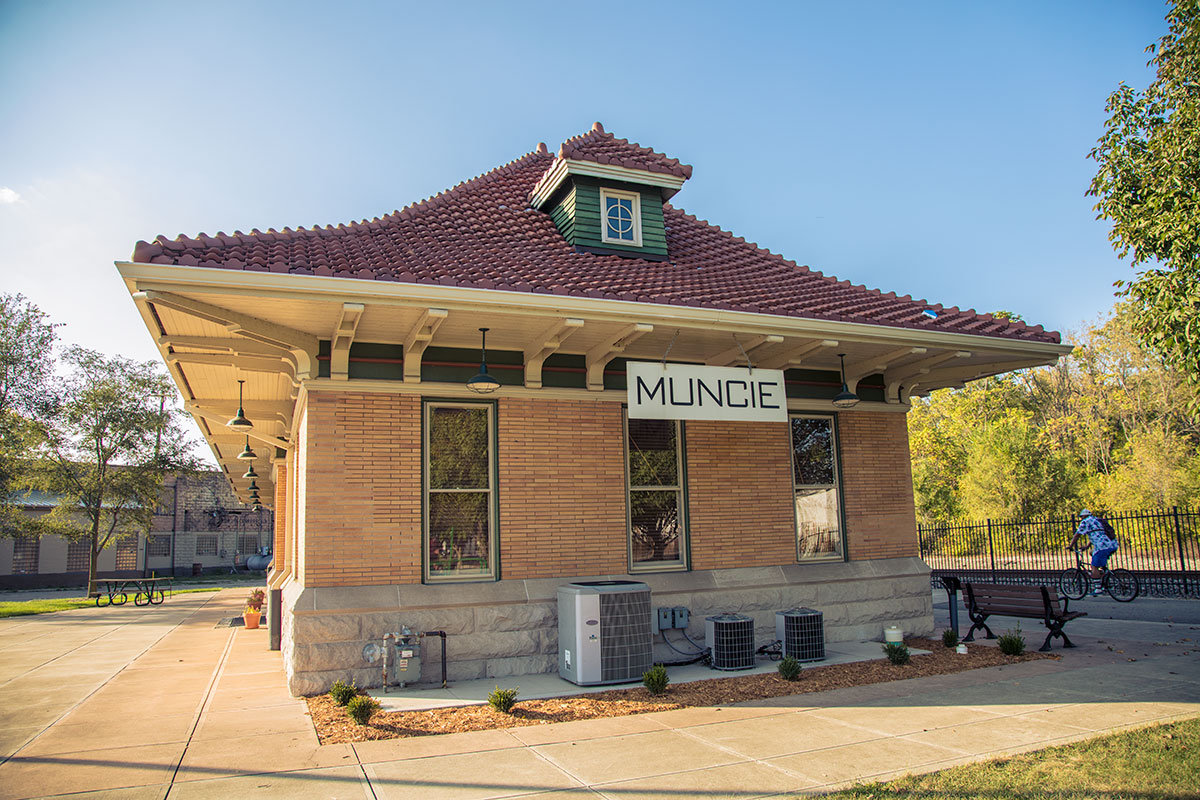 Passenger trains stopped here for the first half of the 20th century and briefly in the 1970s and early 1980s.
Passenger trains stopped here for the first half of the 20th century and briefly in the 1970s and early 1980s.
After purchasing the track, Cardinal Greenway, Inc. restored the Wysor Street Depot as a headquarters for their operation, earning it a listing on the National Registry of Historic Places. After pulling the rails and laying ten miles of asphalt, the first section of trail opened to the public in 1998.
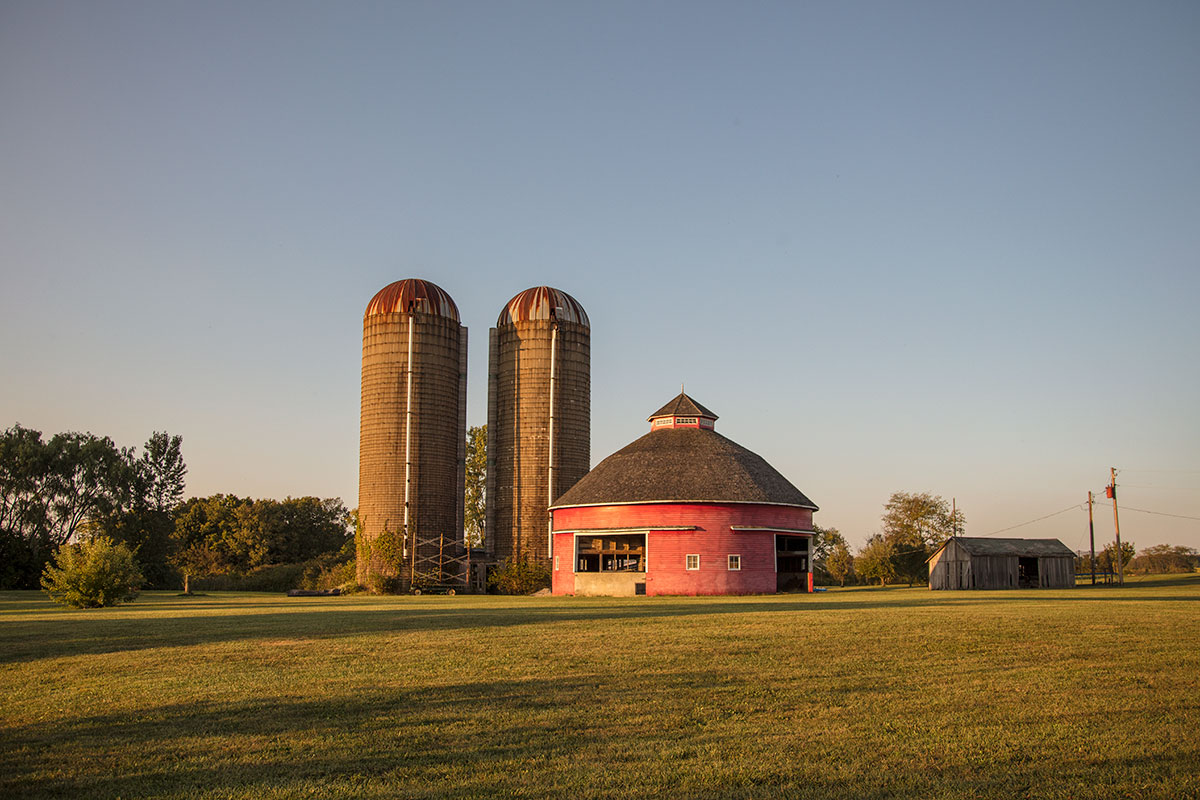 One of Indiana's famous round barns near Medford.
One of Indiana's famous round barns near Medford.
In time, this "rails to trails" project stretched across much of east-central Indiana, connecting cities, villages, parks, rivers, and beautiful Indiana landscapes. Cardinal Greenway continues to add new sections and hopes to "eventually link to trails in Illinois and Ohio."
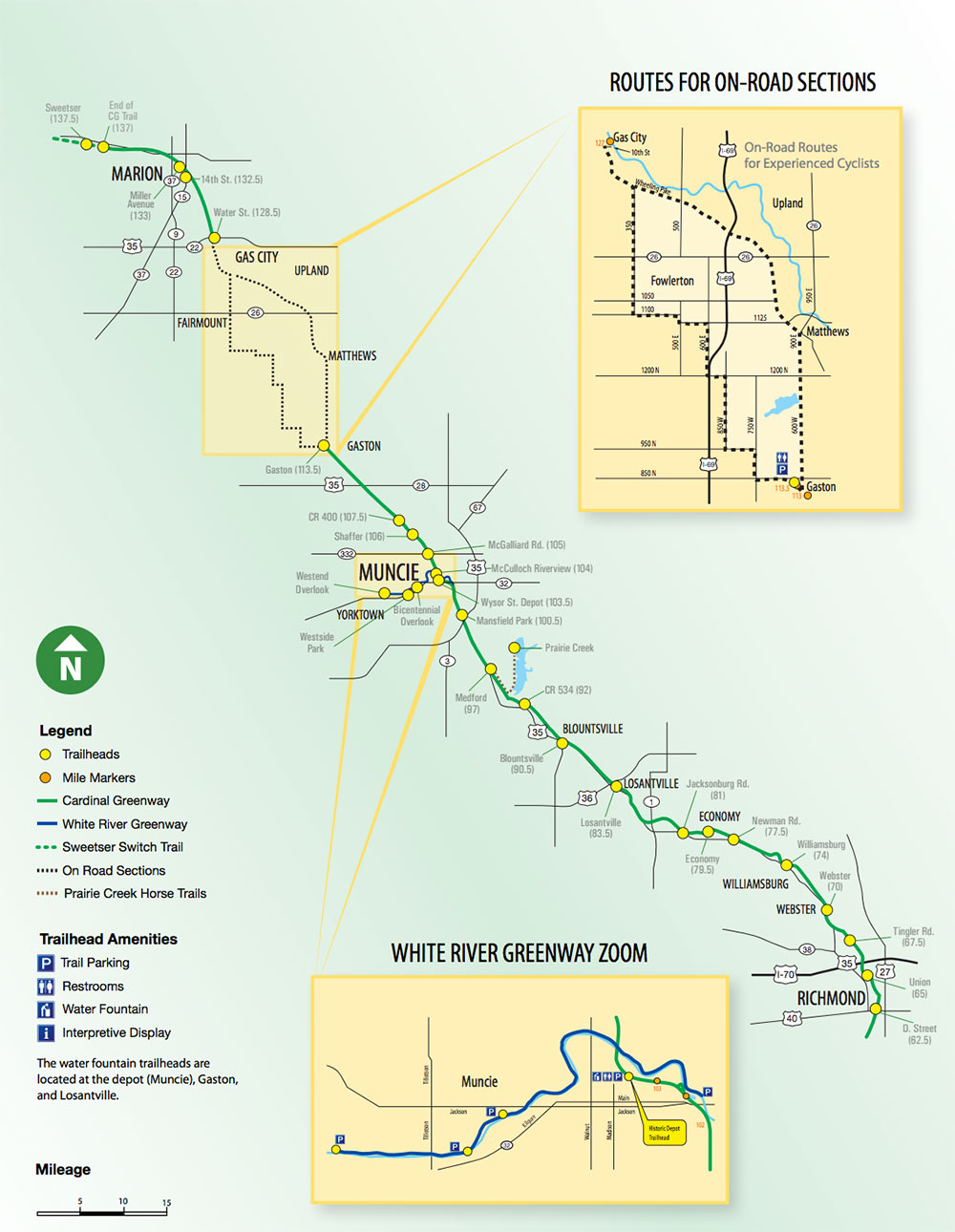 Map of the Cardinal Greenway. 2017 Cardinal Greenway, Inc. Click here for the full map (pdf) and here for the interactive map.
Map of the Cardinal Greenway. 2017 Cardinal Greenway, Inc. Click here for the full map (pdf) and here for the interactive map.
Currently, trail buffs can't directly traverse the entire route of the Cardinal Greenway on the path, but in time, a biker, walker, hiker, or runner could hop on the trail in Richmond and make it all the way to Marion without issue. The trail that starts just south of Richmond does runs to Gaston uninterrupted. Between Gaston and Gas City, the trail runs as an "on road route" before linking back up to the completed trail that runs uninterrupted all the way to Sweetser, just past Marion.
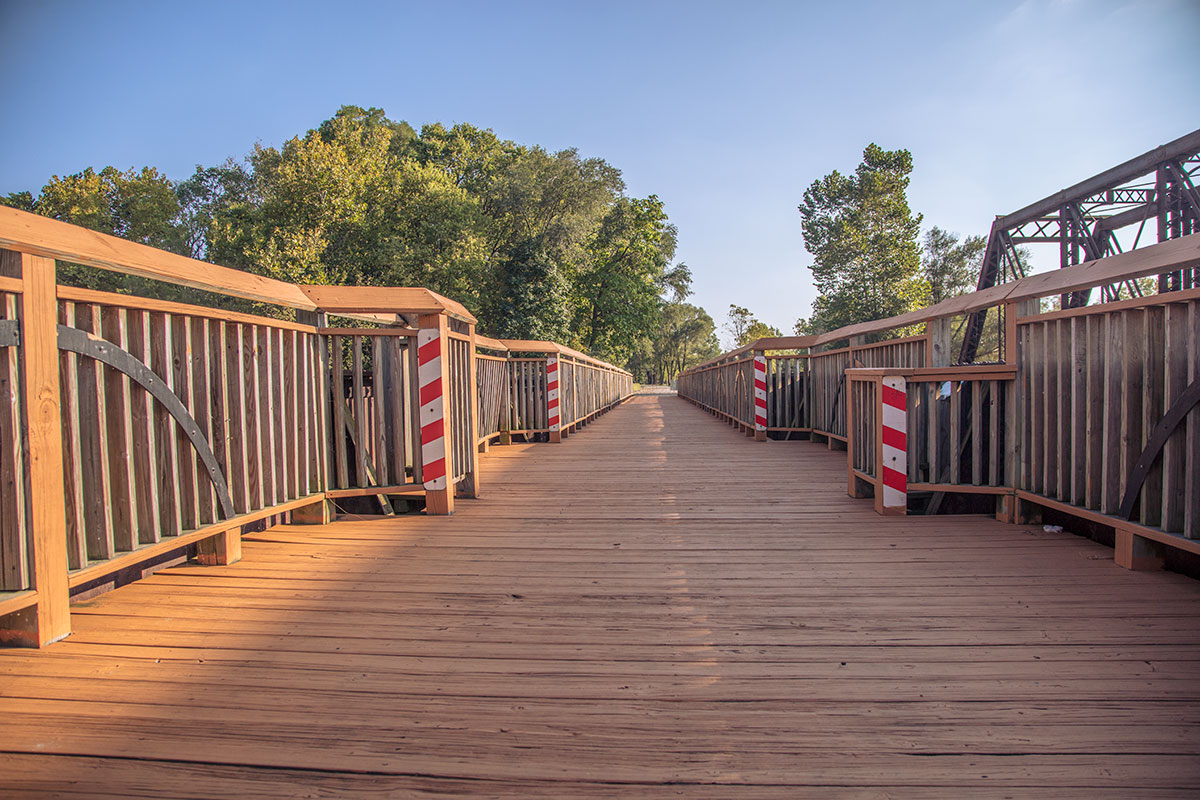 Bridge over the White River in Muncie.
Bridge over the White River in Muncie.
The Cardinal Greenway also links up with other trails including the White River Greenway in Delaware County and the Whitewater Gorge Trail in Wayne County. The Cardinal Greenway is also part of the American Discovery Trail, which links several state and regional routes across the United States from the Atlantic Ocean to the Pacific.
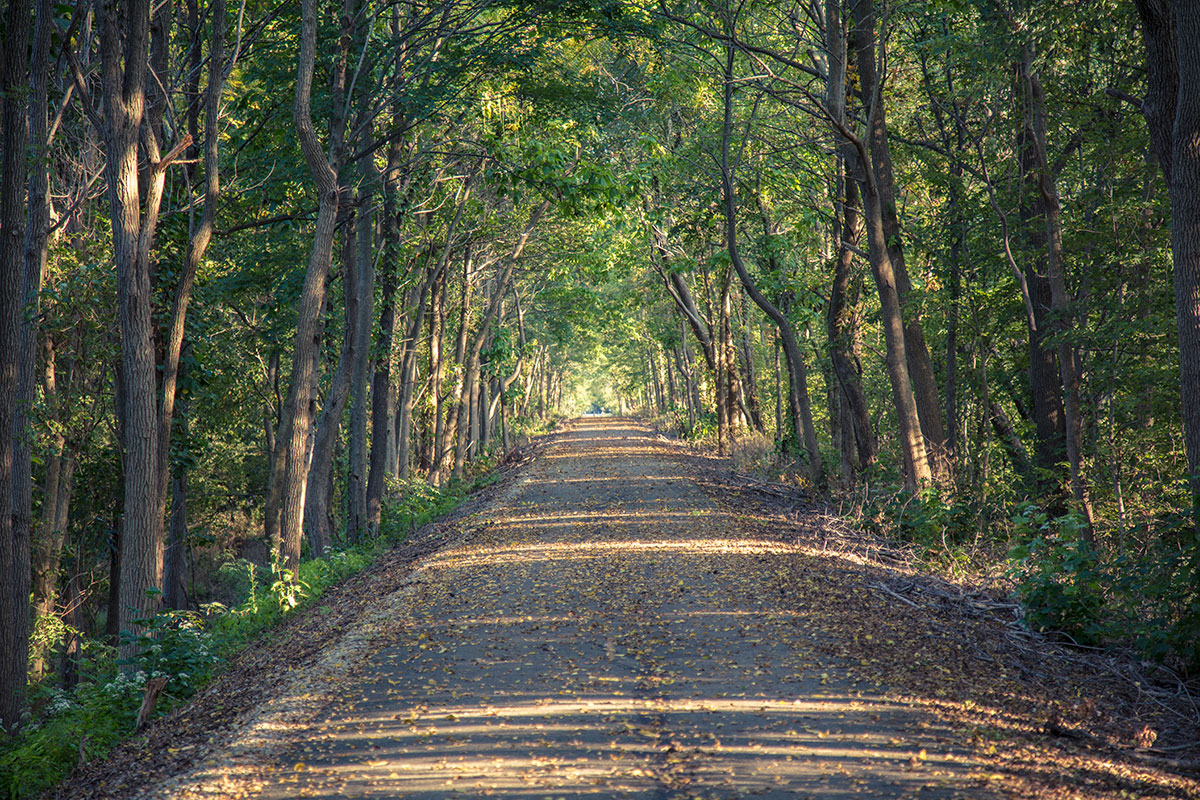 The Cardinal Greenway near Losantville.
The Cardinal Greenway near Losantville.
Although it is the longest, the Cardinal Greenway is one of many rail trails scattered across the state, taking advantage of abandoned railroad routes. In Bloomington, hikers, bikers, and runners can take the B-Line Trail; the Erie Lackawanna Trail in the Region; the Indiana-Michigan River Valley Trail in South Bend; the Monon Trail in Greater Indy; the Nickel Plate Trail in Northern Indiana; the Oak Savannah Trail from Griffith to Hobart; the Panhandle Pathway in Cass and Pulaski counties; the Prairie Duneland Trail connecting Portage to Chesterton; and the Pumpkinvine Nature Trail stretching across Elkhart and Lagrange counties. For a full list, visit IndianaTrails.com to see what is near you!
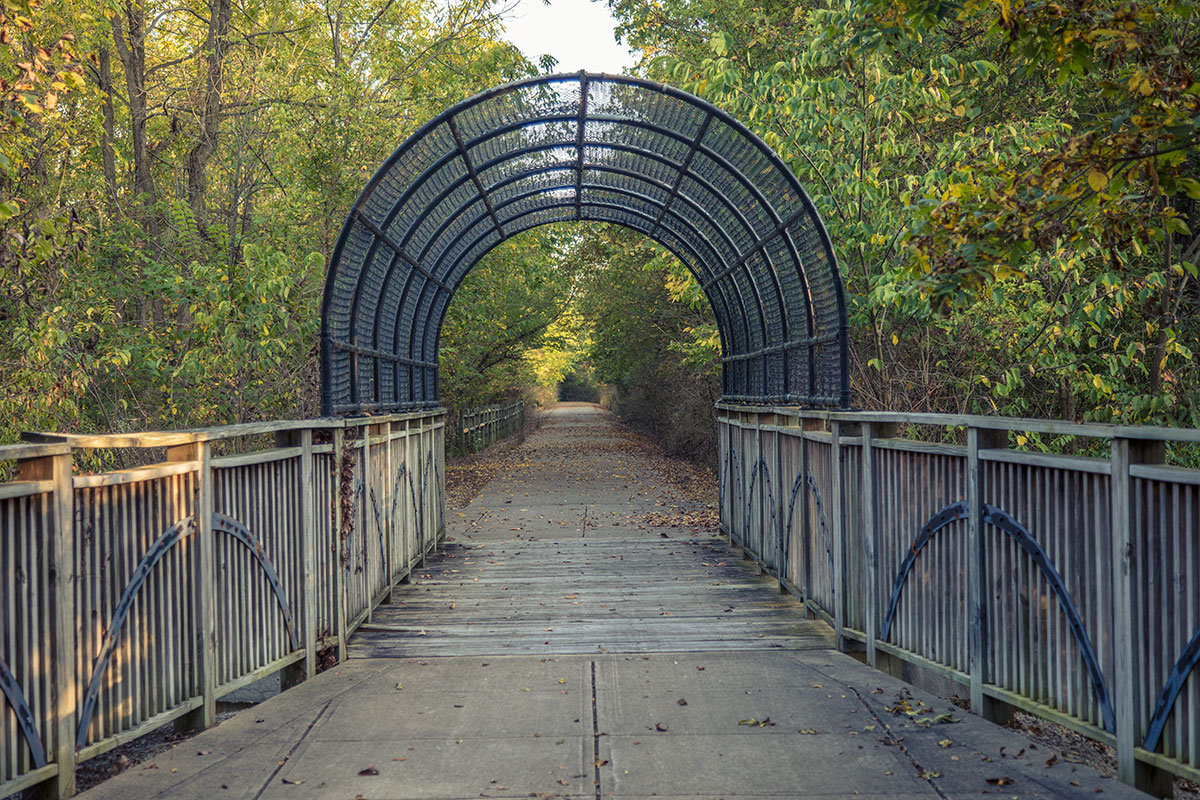 One of several old rail overpasses converted on the trail.
One of several old rail overpasses converted on the trail.
In the end, the Cardinal Greenway and all the other Hoosier rail trails help turn once-abandoned and unutilized vestiges of the industrial era, into something which can reconnect all of us directly with nature...in a very healthy way.
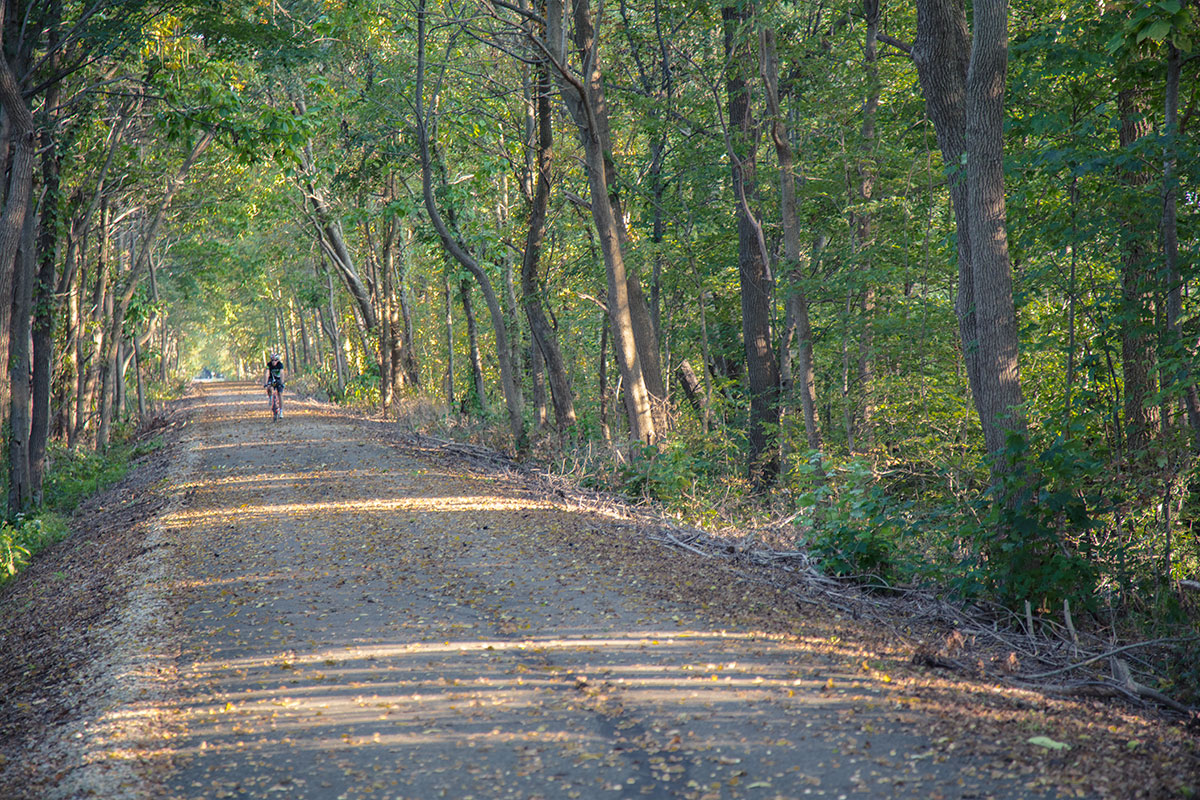 Depending on the time of day, you might have the whole trail to yourself!
Depending on the time of day, you might have the whole trail to yourself!
